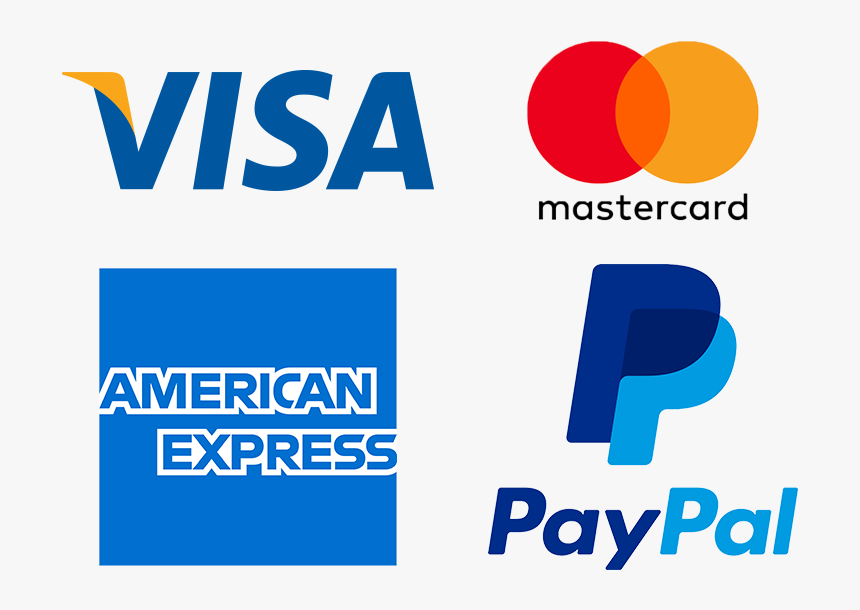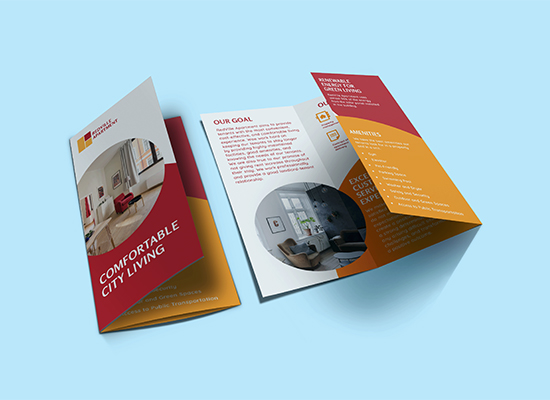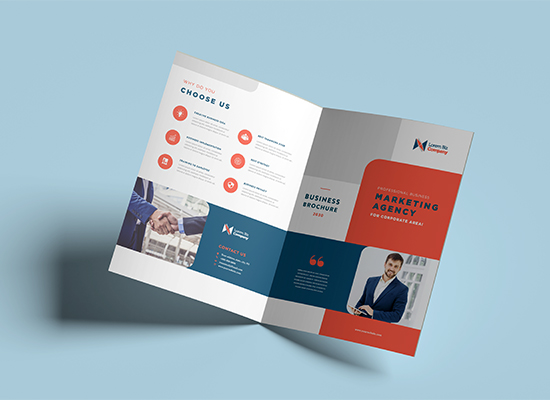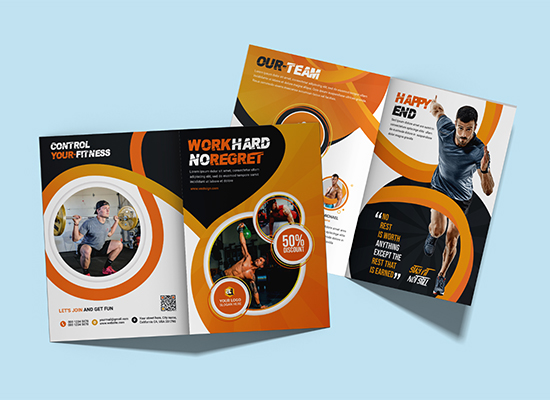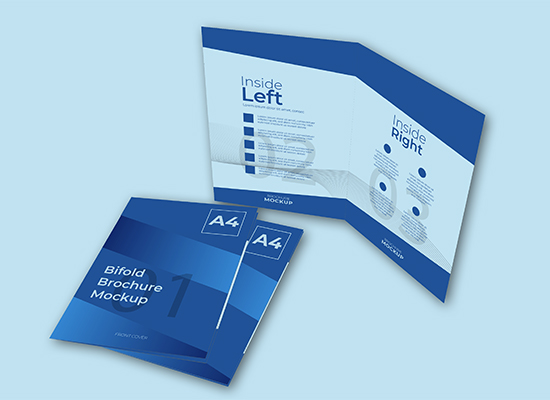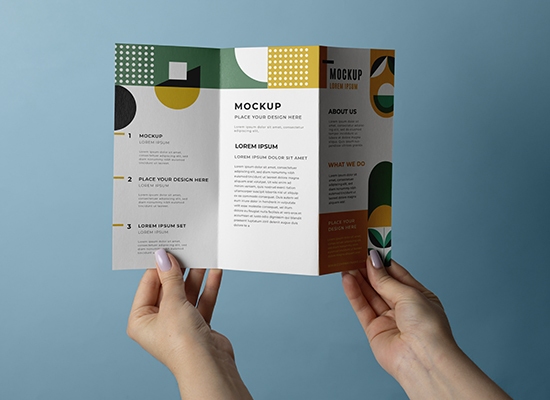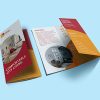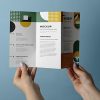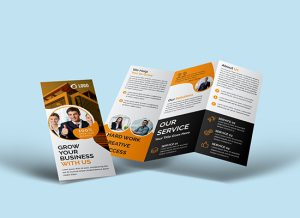Short Description
A4 Folded Brochure
Please select artwork files:

Related Products
Additional Information
Design A4 folded brochures for a compact, informative layout. Ideal for detailed content and professional, eye-catching marketing materials.
A4 Folded Brochure: A Compact, Versatile, and Professional Tool for Communication
Introduction
An A4 folded brochure is a highly effective and versatile tool for communicating information in a compact and professional format. Measuring 210mm x 297mm when unfolded, the A4 size is widely recognized and used across various industries, making it a standard and familiar choice for brochures. When folded, the A4 brochure can be customized into a variety of configurations, such as A5-sized or DL-sized brochures, allowing for easy distribution, mailing, and handling.
Whether used for marketing purposes, event programs, product catalogs, educational materials, or corporate communications, A4 folded brochures provide ample space for both text and visuals while maintaining a manageable and convenient size. Their flexibility in design and folding options makes them ideal for businesses and organizations seeking to make a strong impression while effectively delivering key messages.
Design and Structure
A4 folded brochures come in different folding styles, which determine how content is presented and how the brochure unfolds. The most popular options include:
- Half-Fold (A4 to A5): This simple fold creates four A5-sized panels from the unfolded A4 sheet. With two internal pages and a front and back cover, this format is perfect for straightforward presentations, such as corporate brochures, flyers, or menus. It offers enough space for images, text, and graphics, while the folded format keeps it compact and professional.
- Tri-Fold (A4 to DL): The A4 tri-fold brochure divides the sheet into three equal sections, folded into a DL size (99mm x 210mm). This creates six panels for content, making it ideal for brochures that require a step-by-step presentation or multiple sections of information, such as service lists, travel guides, or promotional materials. The tri-fold layout is highly popular due to its compact size and ease of distribution.
- Z-Fold: In a Z-fold, the A4 sheet is folded in a zigzag pattern, creating three equal panels. The Z-fold opens in a continuous flow, which is useful for storytelling, event programs, or brochures that need to guide the reader through a sequence of information. It’s an effective format for brochures with detailed text or images that need to be viewed in a logical order.
- Gate Fold: The gate fold involves folding the two outer panels inward to meet in the middle, creating a unique and dramatic reveal when opened. This format is ideal for high-impact visuals, such as product showcases or creative portfolios, where a large, uninterrupted internal spread is required. The gate fold adds an element of surprise, making it memorable and engaging for the reader.
The choice of fold depends on the purpose of the brochure and how the content is best presented. Each folding style offers a different way to structure the flow of information, providing flexibility in design and layout.
Customization Options
A4 folded brochures offer a wide range of customization options, allowing businesses and organizations to create brochures that reflect their brand identity and serve specific marketing or informational needs. Here are some of the key customization options available:
- Paper Stock: The type of paper used in the brochure significantly influences its appearance and feel. A4 folded brochures can be printed on a variety of paper types, from lightweight, economical paper for mass distribution to thicker, premium paper for high-end marketing materials. Glossy paper enhances the vibrancy of images and colors, making it ideal for brochures with a strong visual focus, while matte paper offers a more refined, professional look for text-heavy documents.
- Printing: Full-color printing allows businesses to showcase their brand colors, images, and graphics in vibrant, eye-catching detail. High-quality printing ensures that the brochure looks professional and polished. For brochures that need to convey a more serious or minimalist tone, monochrome or two-color printing can be used to create a sleek, understated design.
- Finishes: Laminating or adding protective finishes to an A4 folded brochure can enhance its durability and aesthetic appeal. Gloss lamination makes the brochure shiny and smooth, protecting it from fingerprints and wear, while matte lamination provides a soft, non-reflective finish that adds a touch of elegance. Spot UV coating or embossing can also be used to highlight specific elements of the design, adding texture and depth to the brochure.
- Folding Styles: The different folding options—such as half-fold, tri-fold, Z-fold, and gate fold—allow for creative presentation of information. Each style offers a unique way to organize and guide the reader through the brochure, ensuring that the content is engaging and easy to navigate.
Applications and Uses
A4 folded brochures are versatile and can be used for a wide range of purposes across different industries. Their manageable size, combined with various folding options, makes them ideal for both professional and creative applications. Some common uses include:
- Corporate Brochures: Businesses often use A4 folded brochures to present company profiles, service offerings, or corporate reports. The half-fold format is particularly popular for these purposes, as it allows for a clean and simple presentation of essential information while maintaining a professional appearance.
- Product Catalogs: The A4 size provides enough space for businesses to display products with detailed descriptions and high-quality images. The tri-fold format is particularly useful for presenting multiple products or services in a structured, organized layout.
- Event Programs and Schedules: A4 folded brochures are often used as event programs or schedules for conferences, seminars, and festivals. The Z-fold or tri-fold formats work well for guiding attendees through an event itinerary, speaker information, or venue maps in a compact and easy-to-read format.
- Travel and Tourism Brochures: Travel agencies and tourism boards use A4 folded brochures to create engaging guides for travelers. These brochures can showcase destinations, itineraries, and travel tips, making them useful for promoting vacation packages or local attractions.
- Menus: Restaurants, cafes, and catering businesses often use A4 folded brochures to present their menus. The half-fold or tri-fold formats are perfect for organizing food and drink options in a visually appealing and easy-to-read layout.
- Marketing and Promotional Materials: A4 folded brochures are widely used in marketing campaigns to introduce new products, services, or promotions. The compact size makes them ideal for handing out at trade shows, events, or as part of a direct mail campaign.
Durability and Portability
One of the major advantages of A4 folded brochures is their portability. When folded, they become compact enough to be easily distributed by hand, mailed, or included in presentation packets. Despite their compact size, they unfold into a spacious layout that allows for detailed content and large visuals.
The durability of the brochure can be enhanced through the use of high-quality paper, finishes, and protective coatings. This ensures that the brochure remains in good condition even after repeated handling, making it a long-lasting marketing tool.
Conclusion
A4 folded brochures are a practical, professional, and versatile tool for businesses, organizations, and creatives looking to communicate key messages effectively. With a range of folding options, customizable designs, and high-quality finishes, these brochures offer the perfect balance between size and space. Whether used for corporate communications, product catalogs, event programs, or promotional materials, A4 folded brochures provide a polished, impactful, and highly flexible solution for delivering information in a compact and visually engaging format.
Get Your Quote
My Account
About Us
Our Products
Contact
Follow Us On
We Accept
